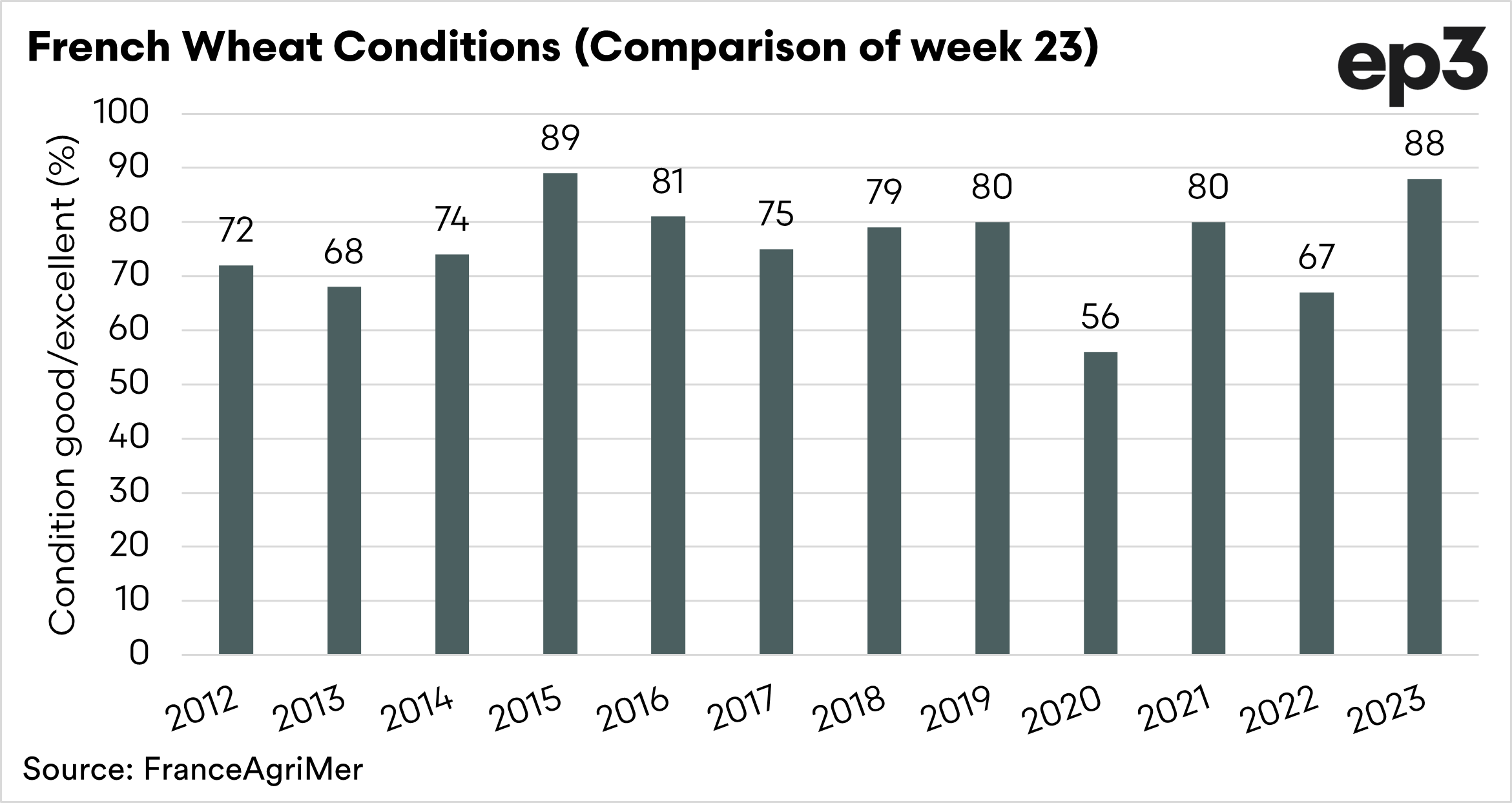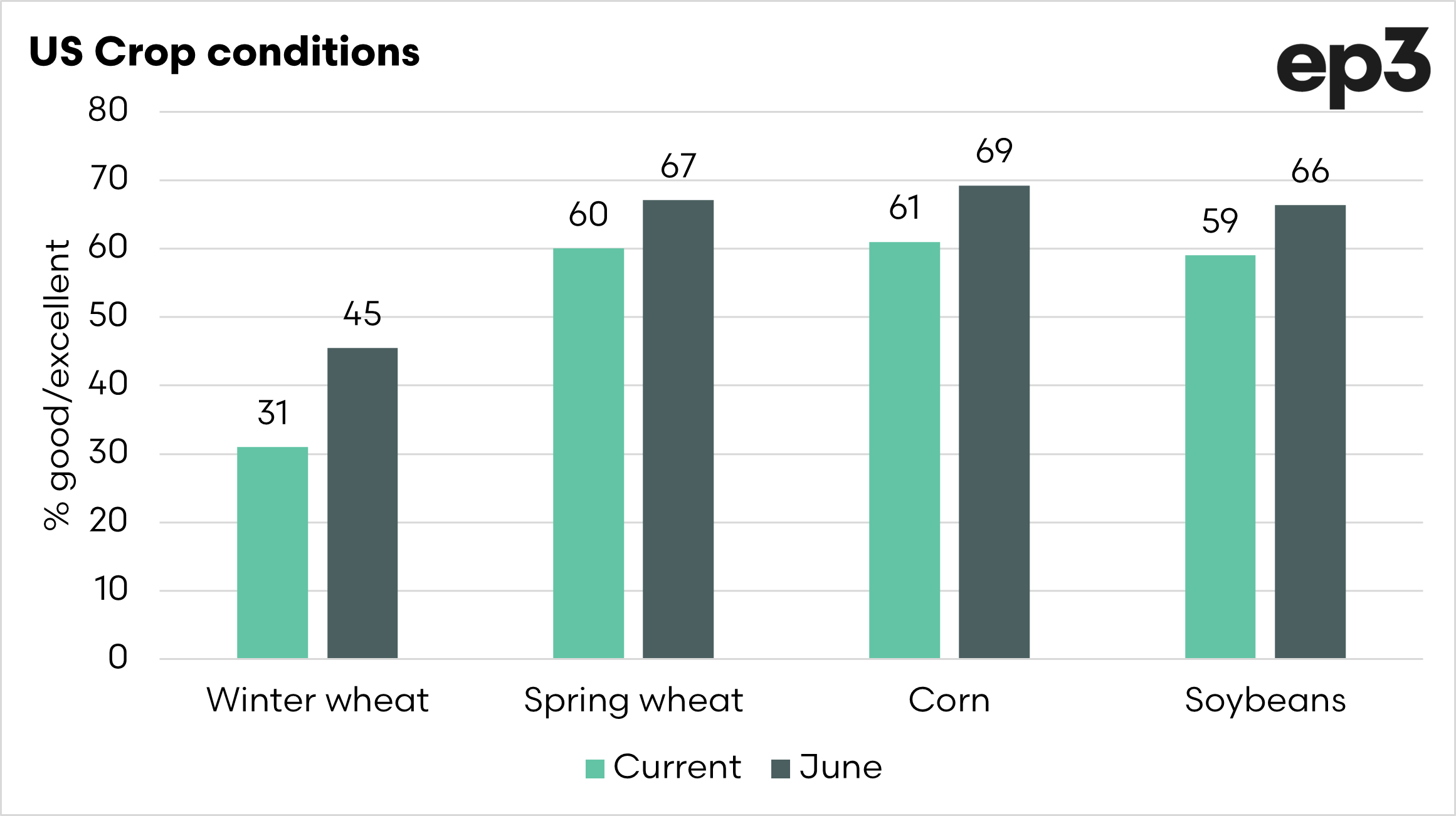Is the wheat market both exciting and boring at the same time?

The Snapshot
- In A$ terms, wheat futures (ASX & CBOT) have been quite flat in recent months.
- There have been big events that haven’t really moved markets.
- French wheat production is looking good
- US crop production is dicey
- Speculators are still betting on a falling market.
The Detail
The markets have been pretty flat of late. The market has traded in quite a narrow band in recent months, especially the ASX contract. The CBOT contract, on the other hand, has been declining in a$ terms.
There have been plenty of news stories in the past two months:
- Speculation that Russia wouldn’t extend the export program ex Ukraine.
- Speculation of huge floods in China.
- The bombing of a huge dam in Ukraine.
The reality is that they have only caused blips. The market is showing an incredible ability to be both boring and exciting at the same time.
So what is happening, and what should we keep an eye on?
Conditions: France
France is Europe’s largest wheat producer, and we closely examine how conditions are forming there, as it is a good indicator of their total crop production.
The EU produced 140.5mmt of wheat last year, of which 38.5mmt was exported. Many of us forget that Europe is a major player, especially when it comes to trade with the North African countries.
So how are the conditions this year? If we compare the most recent data (week 23), against the period from 2012, then it’s good. At present, the conditions are rated 88% good/excellent. This is only 1% lower than in 2015. A year in which the EU produced a bumper crop.
Conditions: United States of America
The US is another important global producer of grains. France is going gangbusters, but America isn’t so lucky.
Drought conditions have impacted crop conditions, which we wrote about earlier (Wheat aren’t in Kansas anymore).
The chart below shows the average June conditions since 2010, versus the current June conditions. Conditions are below average across all the major grains, especially winter wheat.
At this stage, I’d be keeping a close eye on corn and its development. If we see further downgrades, that can have a big impact.
Speculators
Speculators, love them or loathe them, have an impact on the market. They ‘bet’ on the future value of commodities. They make their crust by effectively attempting to guess the direction of the market; they can be short or long.
- Short – They are betting on the market falling further. Short sellers have effectively sold something they don’t own and will aim to buy it back at a lower price in the future.
- Long – They are better on the market rising. They own the commodity and aim to profit from selling it at a higher price in the future.
Whilst many don’t like the idea of speculation, they serve many useful functions, and markets would be difficult without them.
So what are they doing just now? At present, they are holding the longest net short position since 2018.
It is important to note that if something occurs to turn the market bullish, such as anything substantially impacting supply – then those who are short will have to close their positions by purchasing. This pushes prices up as buyers hit the market.
So what’s happening?
Currently, the market doesn’t seem to be showing too much reaction to events. The market is balancing the bearish with the bullish.
The world is still in a dicey position, with the ongoing war in Ukraine, which doesn’t seem likely to end any time soon, and also with stocks within the world’s exporters forecast to be pretty low this year (see here).
In recent years farmers have been lucky to have good crops and decent prices come harvest. This year it is more important to think about your selling strategy. Keep it simple, but we can’t expect a huge global jump without a major hiccup in the northern hemisphere. If we get a local jump, it will be down to local issues.
A local issue, with the corresponding high basis might sound good on paper – but it generally means you have less to sell. In a perfect world, we’d have high prices caused by overseas factors and high local production.
Hope for the best, but plan for the worst.








